I am a fan of quirky old soviet cameras. I have had, loved, and broken a few Zorki 4 cameras over the years, and I love their lenses. I own Jupiter 8, 9 and 12 lenses (50mm f2, 85mm f2, and 35mm f2.8). I use the 35mm for more than 80% of what I shoot, but the Zorki viewfinder only really covers 50mm. I am not down with a separate rangefinder and viewfinder window, it kind of defeats the purpose for me. My friend (and former Soviet himself) Denis recommended a Canon P, which is infinitely more modern, and has 35mm frame lines and is still pretty cheap on ebay. I think I bought mine for only two or three times the price of my Zorki, something like $125 with shipping from Japan.
There are rumblings on the internet about different flange distances between Soviet lenses and the rest of the world’s (primarily German and japanese) Leica screw mount lenses. Also there are different rangefinder focusing cam follower styles between the Canon and Zorki bodies. I measured with a calipers, and the soviet lenses were just a hair different than the Japanese ones (I don’t own any german LTM lenses to compare).
I was about to chuck the Russian lenses in the lathe, and take off a millimeter or two off of their focusing cams, when Denis pointed out that I could just re-adjust the rangefinder on my camera, rather than destroying all of my lenses. That did make more sense.
Anyway, I am not sure if the camera was just out of alignment to begin with (more than likely) or that these lenses were not able to focus 100% correctly with the Canon body. Either way, I adjusted the rangefinder to the Soviet lenses, which are all I use on the camera anyway, and they all focus correctly now.
In the process of doing so, I took some pictures so that other people can follow along if they so wish. I hope these are useful in bringing about some russo-japanese mechanical cooperation, or just re-aligning of some old Canon rangefinders after they’ve inevitably been dropped a few times and are out of whack. They’re great cameras and are super easy to adjust. This adjustment should only take between 5 and 10 minutes.
Before we get started, you will need:
- A very small flat head screwdriver
- A pointy or very small tipped flat head spanner wrench (you can just use the screwdriver, but a spanner will make it much easier)
- A focusing screen, ground glass, or piece of scotch tape or wax paper. something to focus on the film plane
- A magnifying glass or loupe
(for these last two, I just used the focusing screen and pentaprism from my Nikon F)
The Instructions:
First you must adjust the Vertical rangefinder alignment, as this will affect the horizontal alignment. Start by twisting off the knurled cover ring on the circular rangefinder window
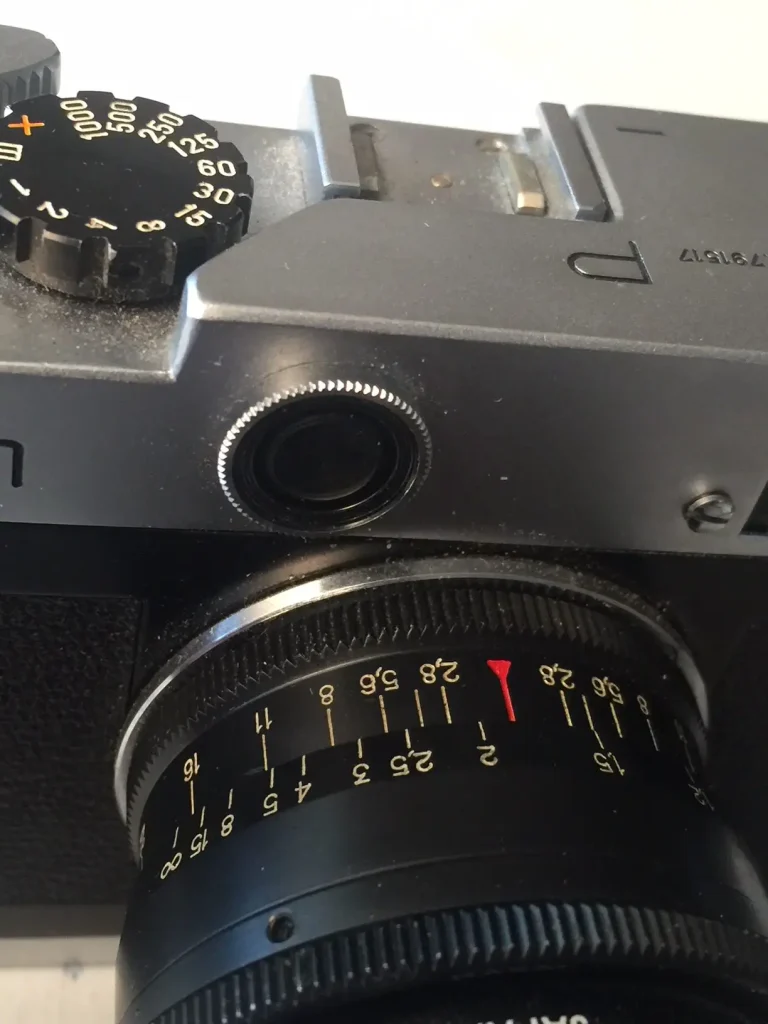
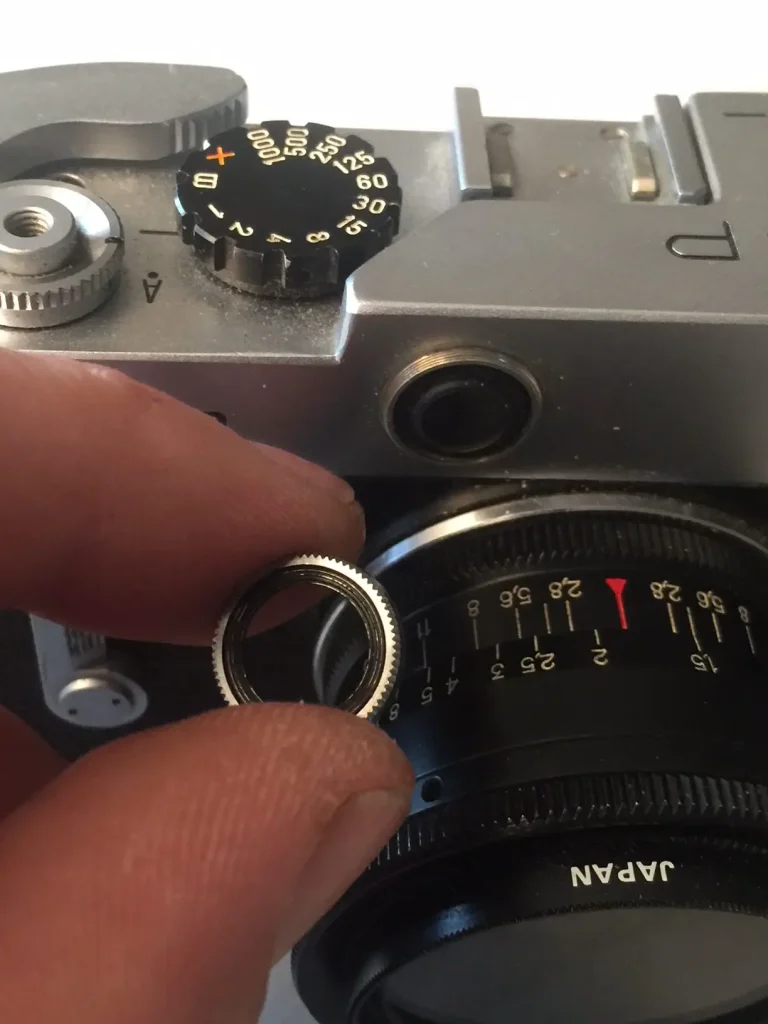
It is hard to see in this next photo, but under the knurled cover ring, there are two slots to rotate this prism window. This changes the Vertical alignment of the rangefinder patch. It is tricky to get at, and rotate without jostling the camera or scratching the window, so this is best done little by little on a table, and then check with your eye for vertical alignment, rather than looking through the camera while adjusting. Do this with a spanner if you have one, otherwise, carefully rotate the ring with a small flathead. I used just a flat head screwdriver to do this.
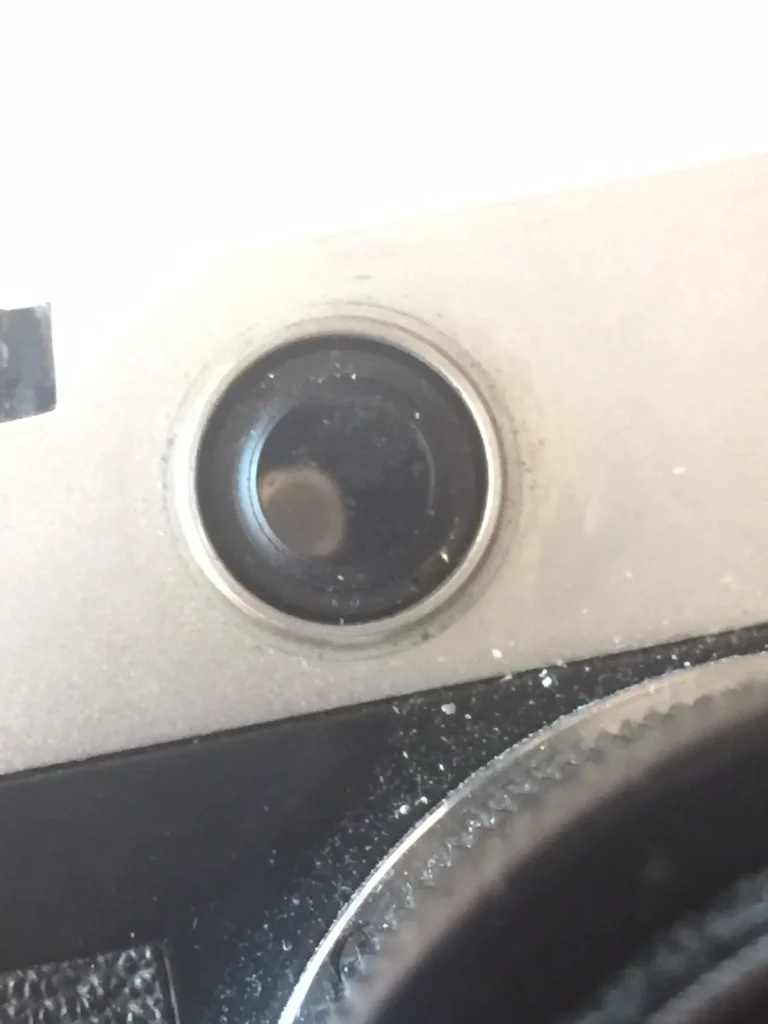
Once the vertical alignment is set correctly, replace the knurled cover, and remove this screw. This screw does not adjust anything itself, it is just a cover for the adjustment screw. remove it fully and put it in a dish or on a magnet where it can’t roll away.
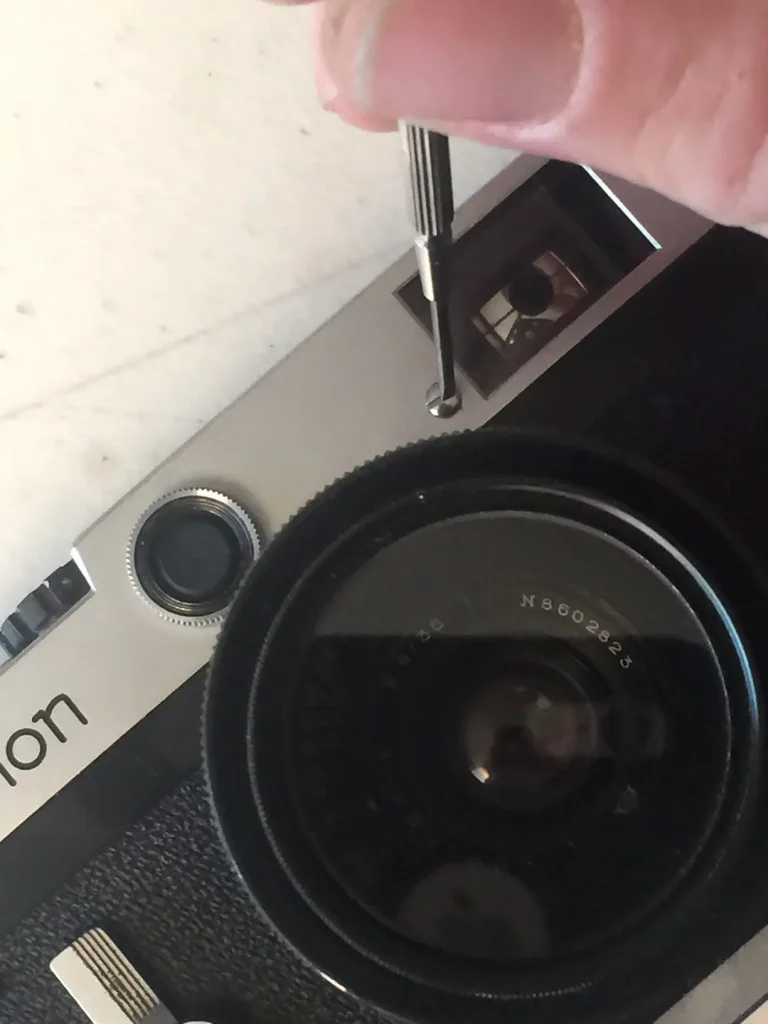
Inside this hole there is a TINY flathead adjustment screw that will shift the rangefinder patch horizontally.
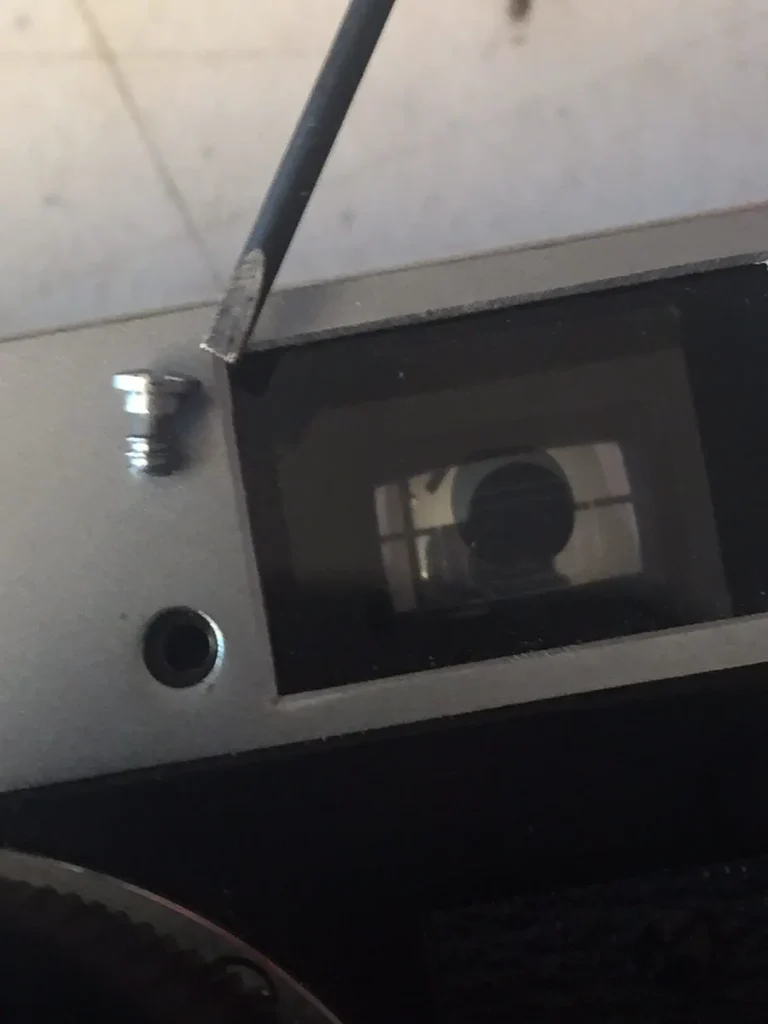
Without poking yourself in the eye with a screwdriver (maybe this would be best done on a tripod), set the lens focus to infinity, go outside and look at something far away through the viewfinder, and turn that little screw until the rangefinder patch aligns horizontally.
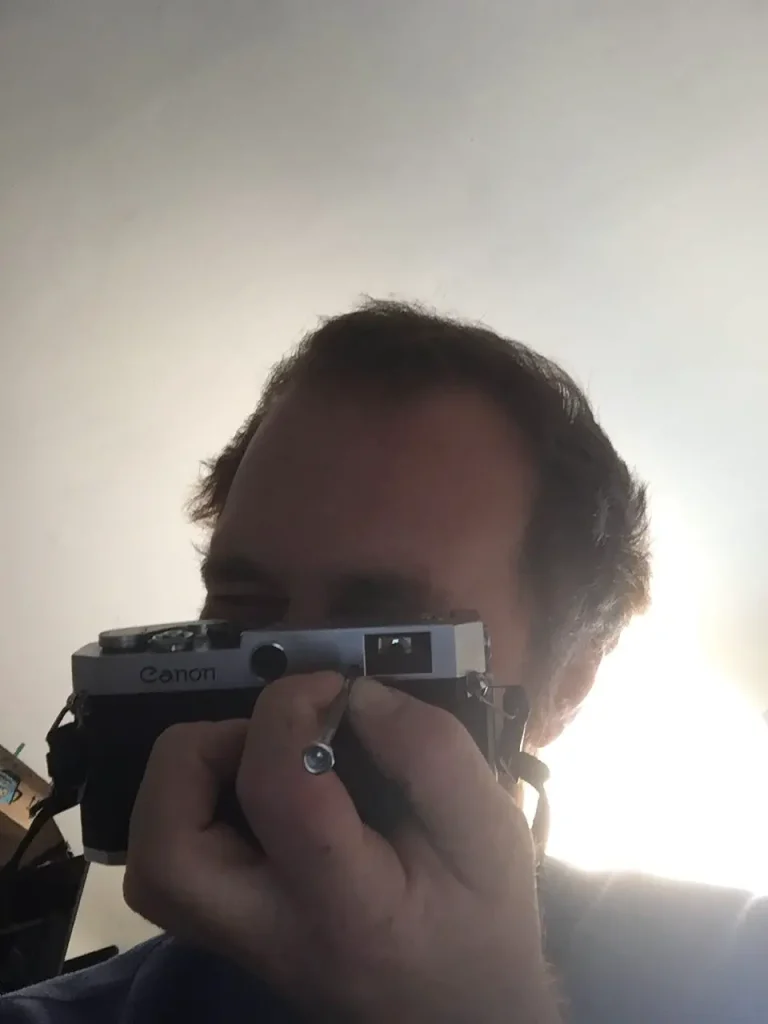
Put some sort of focusing screen on the film plane, and pop open the shutter on B, to check to make sure that the focus is correct. You’ll want to check the focus at infinity and at least one middle distance, like 2 or 3 meters, just to make sure.
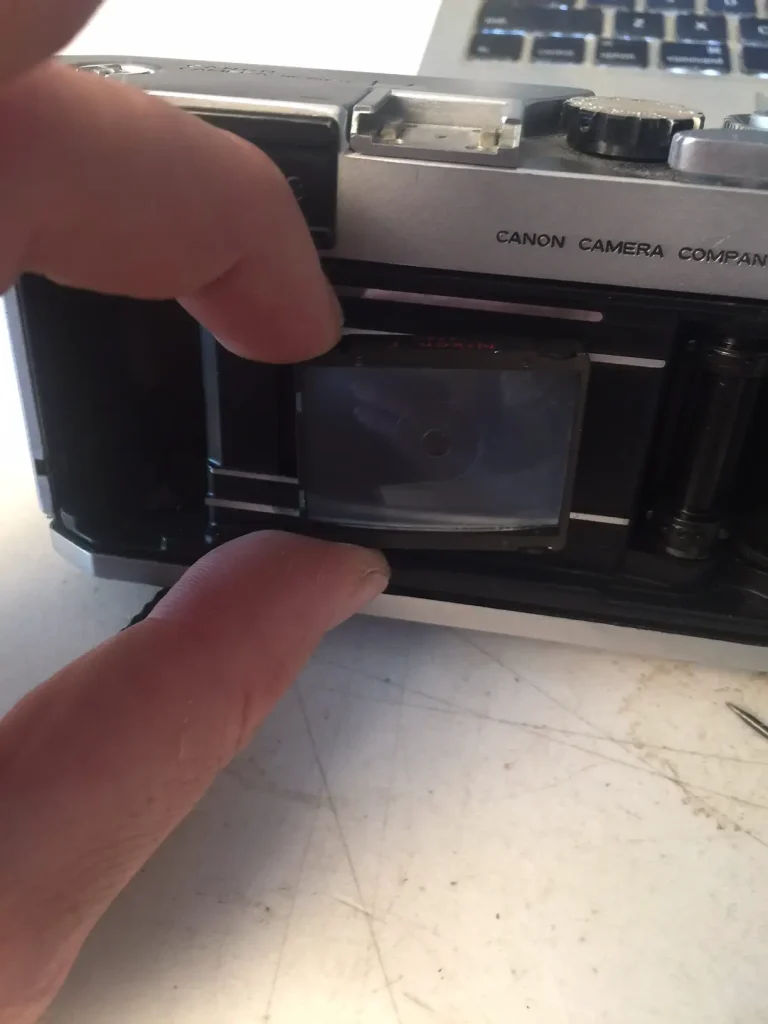
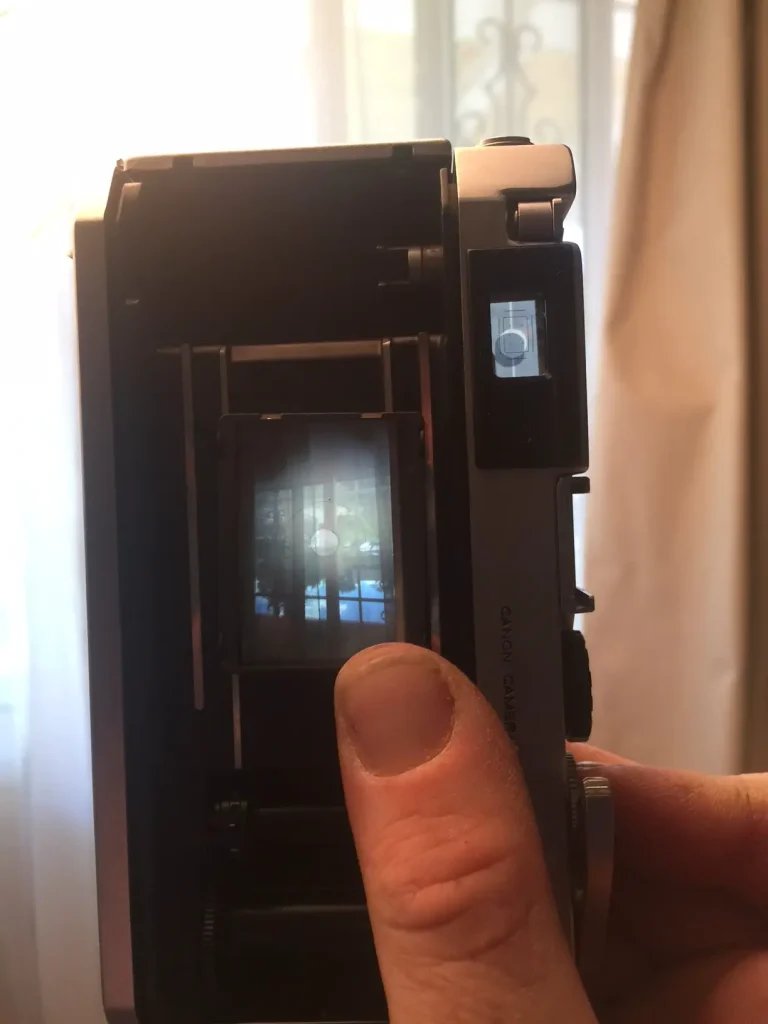
You want to focus on something with the rangefinder patch, then use a magnifying glass to check that focus through the lens on your focusing screen that is held to the film plane. In my case I used the focusing screen and prism from my Nikon F, but just about anything will do, a piece of scotch tape or wax paper and a loupe are a good choice. Just make sure to check the focus alignment at infinity and a few closer distances. I like to check at infinity, 2 or 3 meters, and then minimum focus.
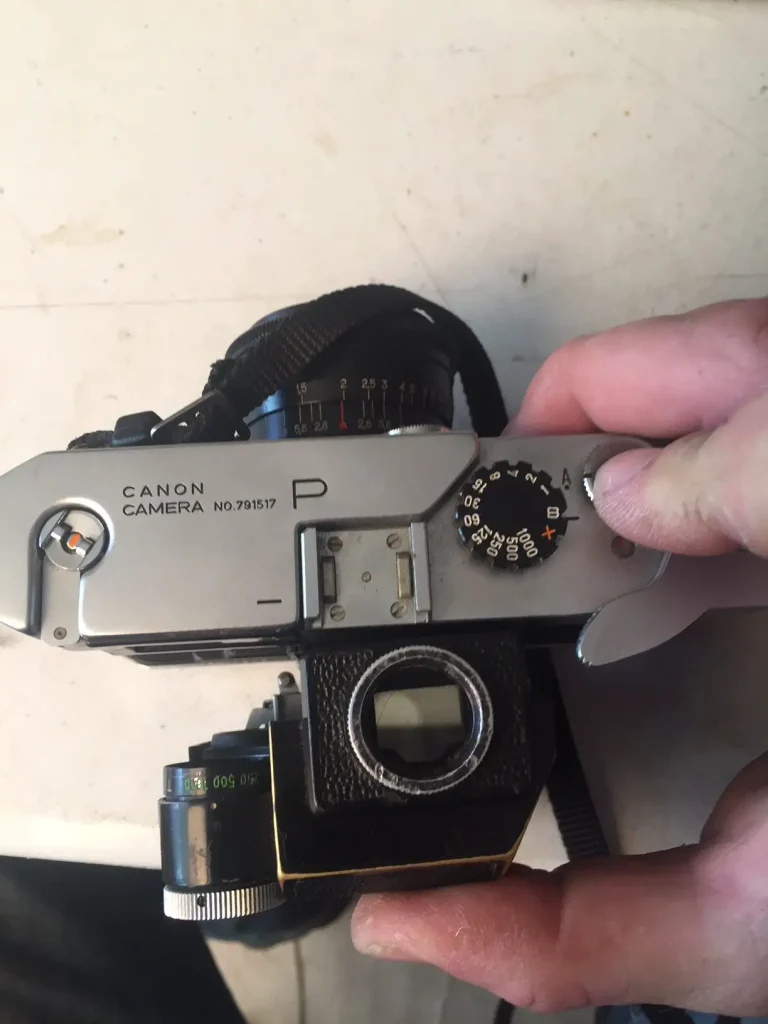
Finally, check it with all the lenses. The worst thing is not being confident in your rangefinder calibration when you want to take a picture. And you’re done!
You can find me on instagram here: Cameradactyl
Share this post:
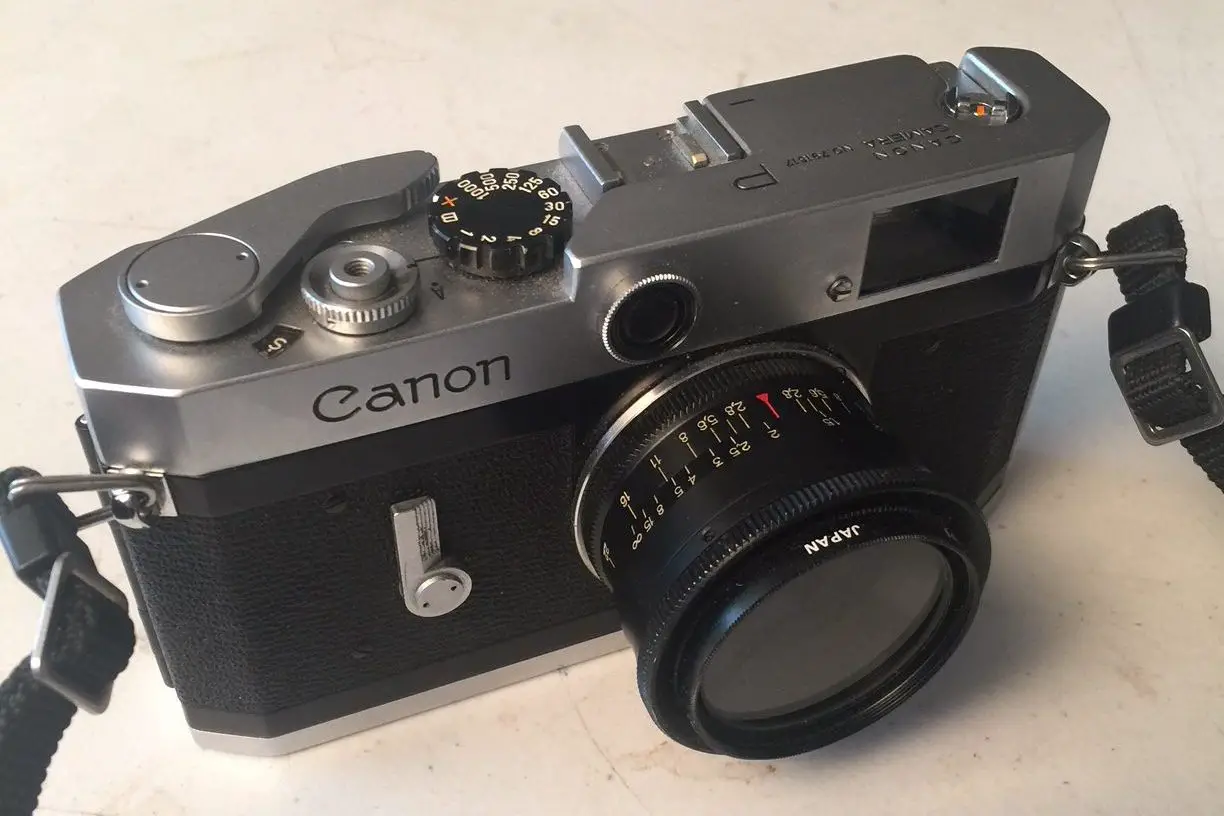








Comments
Laurence Kesterson on How to Calibrate a Canon P Rangefinder (in my case, for use with Soviet lenses) – by Cameradactyl (Ethan)
Comment posted: 23/10/2018
Thanks for the walk through for adjusting the Canon rangefinder. It's a camera I'll eventually try.
david hill on How to Calibrate a Canon P Rangefinder (in my case, for use with Soviet lenses) – by Cameradactyl (Ethan)
Comment posted: 23/10/2018
I admit I'm not quite sure HOW Cameradactyl is successful with this .. the focus mechanics are _different_; you can optimize your results for near or far or somewhere between, but you just can't be spot-on for wide-open aperture at all distances. Just cannot be, damnit. But stop down a bit and things improve. Shim the lenses and things improve. Adjust the rangefinder and things improve .. but they don't become perfect without adjusting the helical. I suspect his rangefinder was just _off_ and he fixed that. I also appreciate the review of how to adjust & test these elements -- I need to review my Canon P accuracy.. And I have Russian, Leica AND Canon lenses, all of which I'd unreasonably wish would work nicely together. :)
Brian Sweeney on How to Calibrate a Canon P Rangefinder (in my case, for use with Soviet lenses) – by Cameradactyl (Ethan)
Comment posted: 28/10/2018
You are best to adjust the Canon RF for mid-range, ~15ft or so. That is what I use for shimming a Russian lens for a Leica body. Focus shift with the Russian lenses is towards infinity. Optimizing a lens for close-up work, stop down a little for infinity. The Focus Shift and increase DOF will work together.
Russian lenses have a lot of sample-to-sample variation. The tolerance for focal length was 1%, with the spec being 52.4mm. Lenses on the short end work perfectly with a Leica after setting the shim, those on the long end will never be quite right. Unless you change the focal length by grinding down the optical fixtures and moving the rear group in 1~2mm.
Canon P hopeful on How to Calibrate a Canon P Rangefinder (in my case, for use with Soviet lenses) – by Cameradactyl (Ethan)
Comment posted: 12/02/2019
Matt Jones on How to Calibrate a Canon P Rangefinder (in my case, for use with Soviet lenses) – by Cameradactyl (Ethan)
Comment posted: 06/08/2019